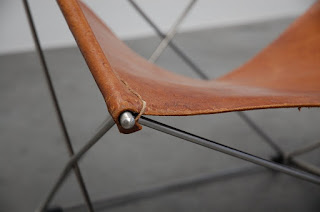Cathedral of The Pines
I visited this fantastic exhibition of the art-photography of Gregory Crewdson at the Photographers' Gallery (again) recently. The photographs from this series are really large prints, shot on a large format camera, as befits Crewdson's cinematic vision. The images speak of the vastness and majesty of nature, and the sense of isolation and claustrophobia experienced in interiors. Crewdson's work has many parallels with that of American painter Edward Hopper's (here) in this respect. The setting of the photographs and the title of the exhibition refers to a hiking trail in the mountains of Massachusetts, and so evocative are these images of nature, you can virtually smell the heady scent of the pine forests in which they are set.
The Mattress
The VW Bus
The Motel
All of the images - be they landscapes, or interiors - are beautifully composed. In all of the photographs there is a tacit, tense, narrative which suggests the viewer has just stumbled upon a drama, or that one has just occurred, making you question what is actually happening, especially in those images in which there is the presence of emergency service personnel or vehicles. You wonder why the emergency services were called, what incident took place, and if anybody was actually harmed. In these photographs it is clear to see that Crewdson, like Hitchcock before him, is a master at evoking a sense of psychological tension. There are also nods to 19th and 20th century European landscape paintings. One photograph in particular - The Quarry - reminded me of Manet's Déjeuner sur L'herbe, in its setting and staging for some reason.
The Pick-Up Truck
The Shed
Woman In Bathroom
Woman At Sink
All of the female figures in the photographs appear to have an air of melancholy about them. They seem like prisoners, trapped in their home environments, confined to a lifetime of domestic drudgery, looking longingly out of the windows into the wider world for a means of escape. Others because of the way in which Crewdson has lit them, look waxen, lifeless, or prone because of their nakedness.
The Disturbance
Sisters
Reclining Woman On Bed
The interiors are also interesting in themselves. They are like meticulously composed time capsules, homages to the 1970's - all shades of tan, brown and orange - and suitable attention has been paid to the details with the sourcing of period accessories like the old landline telephones. Looking at these photographs it becomes clear that they are actually composed of pictures within pictures. There are lots of frames within frames, as the figures are framed within the window frames, door frames, mirror frames, and there are further frames of pictures on the walls. When you look closer into the photographs in the series you can see that all of the pictures hanging on the walls of the interiors are actually landscapes, cleverly mimicking the real landscapes seen out of the windows and bringing the outside into the interior, or reference the landscapes seen outside of the windows. The interiors have an eerie stillness, and quiet reminiscent of a Vermeer or Hammershøi, adding to the sense of atmosphere and tension.
Reclining Woman On Sofa
Pregnant Woman On Porch
Beneath The Bridge
I have visited this exhibition twice so far, and both times have discovered something new in the details of these large, cinematic photographs. If you can make time to visit this show then do so, you will be inspired and more than well rewarded for your efforts.
Gregory Crewdson: Cathedral Of The Pines
until 8th October
The Photographers' Gallery
16-18 Ramilies Street
London
W1





















































